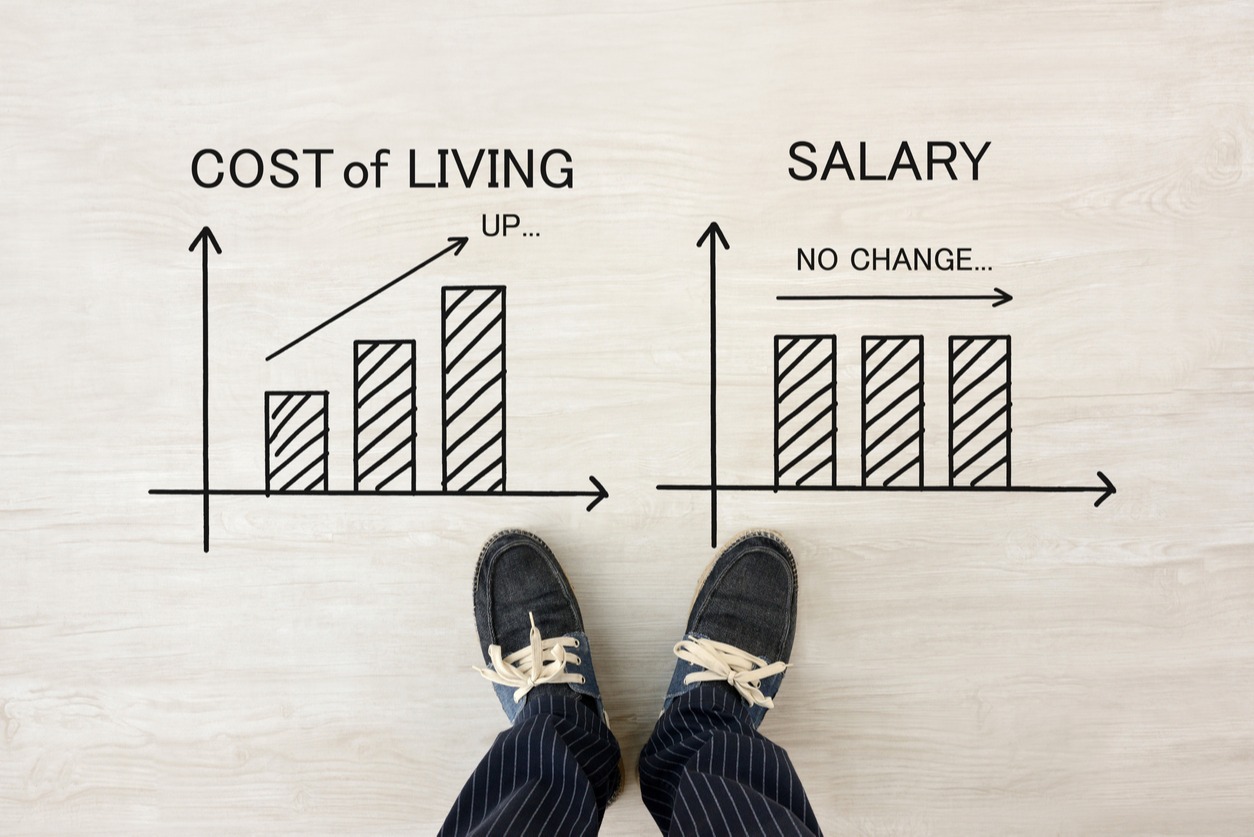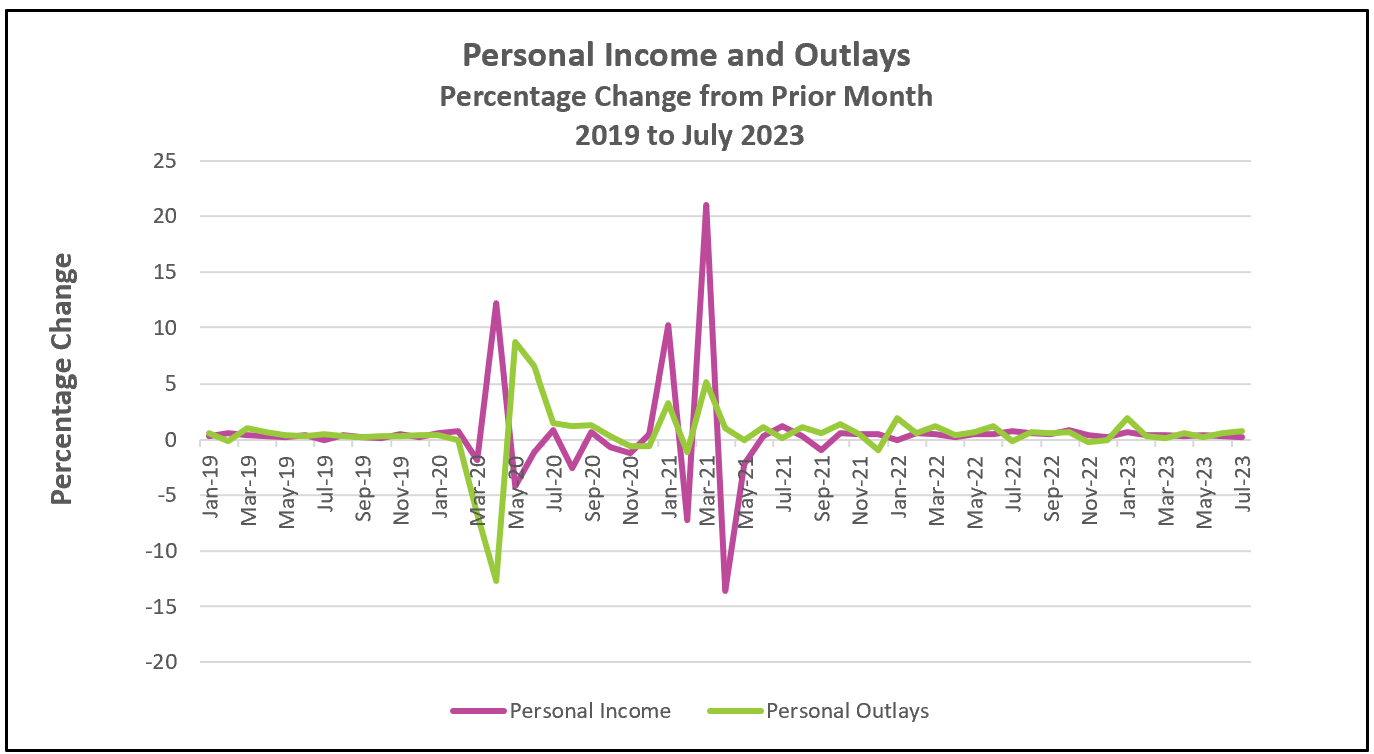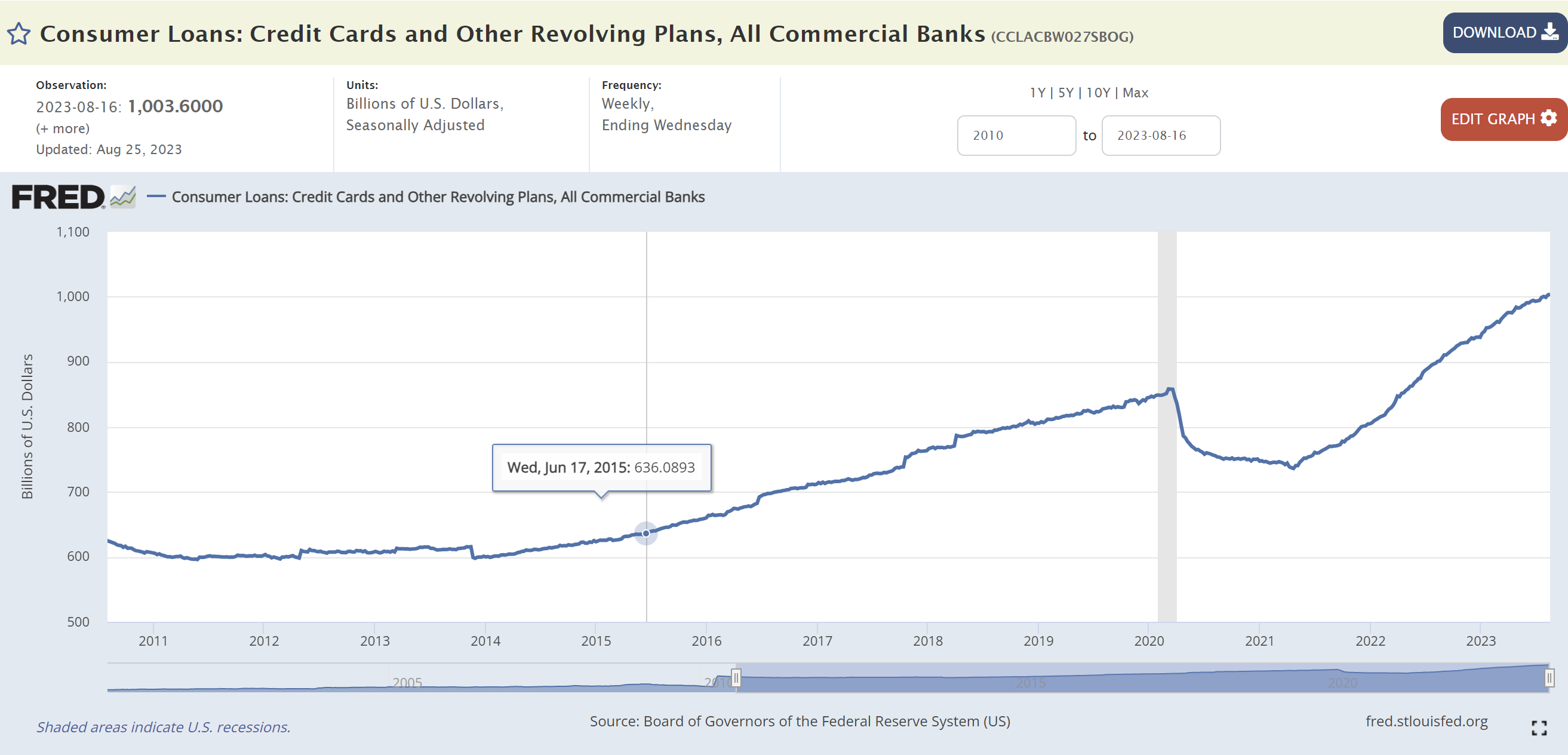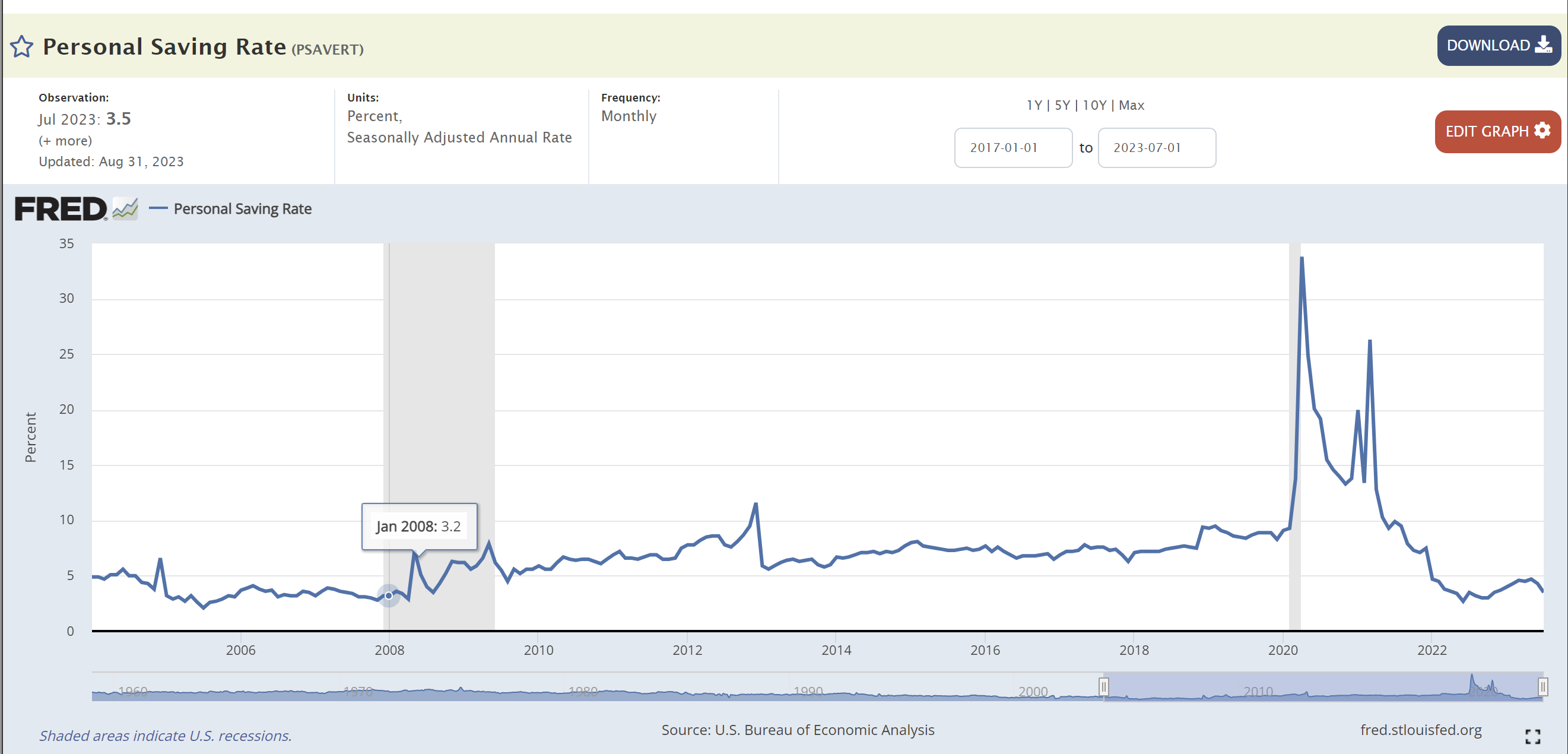
A sharp increase in consumer spending for the past two months helped push prices up slightly. However, the trend is not sustainable because it cannot be supported by falling disposal income and lower savings rates.

The highlights of the Bureau of Economic Analyses’ full report, Personal Income and Outlays – July 2023, are listed below.
Consumer spending rose 0.6%, while disposable income fell after being adjusted for inflation. Wages increased slightly, but a decrease in transfer payments offset the wage gains. Households have financed their added spending with more debt and less savings.
The increase in consumer spending helped push estimates of the third quarter growth up to 5.6%. (Federal Reserve Bank of Atlanta). Such growth would be bad news for policymakers at the Federal Reserve. If sustained, it would also contribute to higher prices because the growing demand would enable businesses to increase their prices. Both the all-inclusive and core price 12-month price indexes rose in July – but the trend points toward a deceleration of inflation, as the rolling three-month average of the core 12-month rate has fallen each month since November 2022. The resumption of student loan payments in September will likely dampen consumer spending.
Disposable income failed to keep pace with inflation for the first month since June 2022. Furthermore, it was significantly less than the rise in spending during June and July, making it difficult to maintain the level of spending without dipping into savings or increasing borrowing. Indeed, consumer debt has been rising to record levels.

The savings rate also fell to the lowest point since December 2005.

Policymakers at the Federal Reserve will be encouraged by this report. While consumer spending rose sharply, it can only be sustained with significant wage growth. However, wages are trending lower. Furthermore, July’s slight uptick in the 12-month inflation index wasn’t anything but a blip on the radar. Monthly figures remain subdued. Most economists expect policymakers at the Fed to hold firm on interest rates when they meet on September 20th. However, it is too soon for policymakers to declare victory. The US economy has proved resilient as consumers have defied predictions and continue to spend. If spending gains momentum, businesses will likely raise prices, adding to the Fed’s challenge of taming inflation.
A strong labor market has likely prevented or delayed a recession, where a labor shortage has put upward pressure on wages. The Bureau of Labor Statistics reported that wages continued to fall in August. Keep an eye on HigherRockEducation.org for our summary and analysis on Monday.